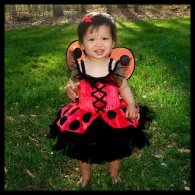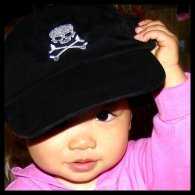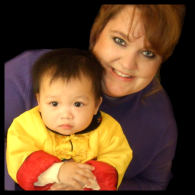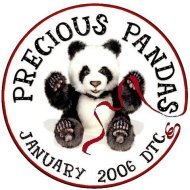My Panda friend has friends who are experiencing the unthinkable right now. Their one year old son got a hold of some popcorn and aspirated it. Both parents were trained on CPR. So, no matter how careful you are as a parent or how qualified in CPR...things can happen in the blink of an eye. Their loss is imaginable and this prompted my post.
Please, Please become certified in CPR. You can save the life of your own child or some one elses or at least give them a fighting chance. I am not responsible for the info below, it is just information that was found on the internet. Please do not substitute it for your own research. Thank You.
To minimize the risk of a baby or toddler choking, follow these safe feeding tips:
Be careful of big globs of food, such as golf ball-sized, pasty globs of white bread or spoonfuls of peanut butter. Even though these foods are soft, babies can choke on them. Don't spread peanut butter too thick, and monitor how quickly the bread gets packed into the mouth. The more whole grains in a bread, the less likely it is to form a pasty glob.
Check the chunks. Once baby's molars appear (usually around the middle of the second year), chunky soft fruits (such as fruit cocktail-type size and texture) are safe.
Allow toddlers finger foods only under supervision. Be sure they stay seated as they eat and are not lying down or running around. Choose snacks for the car carefully.
Hold the hot-dogs . Since hotdogs are neither nutritious nor safe for baby, you can scratch them from the diet. If you are fortunate enough to find a healthy hotdog (nitrite-free, low in salt), slice it lengthwise in thin, noodle-like strips. Don't let your toddler bite chunks off a hotdog, since a hotdog chunk is about the size of a baby's windpipe.
Avoid raw fruits and vegetables that snap into hard chunks, such as carrot and celery sticks and firm apples.
Peel and slice grapes. Whole grapes can cause choking.
To minimize the risk of a baby or toddler choking, follow these safe feeding tips:
Be careful of big globs of food, such as golf ball-sized, pasty globs of white bread or spoonfuls of peanut butter. Even though these foods are soft, babies can choke on them. Don't spread peanut butter too thick, and monitor how quickly the bread gets packed into the mouth. The more whole grains in a bread, the less likely it is to form a pasty glob.
Check the chunks. Once baby's molars appear (usually around the middle of the second year), chunky soft fruits (such as fruit cocktail-type size and texture) are safe.
Allow toddlers finger foods only under supervision. Be sure they stay seated as they eat and are not lying down or running around. Choose snacks for the car carefully.
Hold the hot-dogs . Since hotdogs are neither nutritious nor safe for baby, you can scratch them from the diet. If you are fortunate enough to find a healthy hotdog (nitrite-free, low in salt), slice it lengthwise in thin, noodle-like strips. Don't let your toddler bite chunks off a hotdog, since a hotdog chunk is about the size of a baby's windpipe.
Avoid raw fruits and vegetables that snap into hard chunks, such as carrot and celery sticks and firm apples.
Peel and slice grapes. Whole grapes can cause choking.
CHOKABLE FOODS
- cherries with pits
- meat
- chunks
- candy, hard
- nuts
- hot dog, whole chunks
- popcorn
- popcorn kernels
- raisins
- raw apples, pears, carrots, beans
- stringy foods
- whole olives whole grapes
Keep small objects out of reach from your child such as coins, small toys and game pieces, peanuts, balloons, and beads. A good rule of thumb is if the object fits inside a toilet paper roll cylinder, it is small enough to choke on.
Do not let your child eat away from the table. Many children choke because they are eating and playing at the same time.
Keep your child in your sight while he is eating.
The universal signs of choking include:
- Inability to speak
- Weak, ineffective cough
- Noisy breathing or high pitch when inhaling
- Difficulty breathing
- Bluish skin color
- Loss of consciousness if airway is not cleared
If your child (over age 1) is choking, do the following:
- Ask, “Are you choking? Can you speak?”
- If he cannot cough, cry, or speak, he is choking.
- Place him on the floor or on a chair standing up. Stand behind him with his back to you. Wrap your arms around his waist.
- Make a fist with one hand. Place the thumb side of your fist just above the child’s naval and well below the breastbone.
- Grasp the fist with your other hand.
- Make quick upward and inward thrusts with your fist. Do not thrust hard enough to lift the child off the floor.
- Continue these thrusts until the object is dislodged or the child loses consciousness.
- If he loses consciousness, lower him to the floor, then call 911. Begin CPR. If you can reach the object
- If the object is not free after 5 blows:
- Turn the baby face up and support the head.
- Place 2 fingers on the middle of her breastbone just below the nipples.
- Give up to 5 quick thrusts down, compressing the chest 1/3 to ½ the depth of the chest.
- Repeat the process of the 5 back blows and the 5 chest thrusts until the object is dislodged. If the baby becomes unconscious, see if you can reach the object. Start infant CPR and call 911 one minute after beginning CPR.






























































1 comment:
HI Stephe, This is perfect,thanks so much for your kind words and thoughts. It is very hard right now for everyone who knows this family. It is comforting to know that there are so many people who send their heart felt condolences. Thank you for helping to educate every parent who reads your blog. I know that this family would be grateful that a lesson was learned by their tragedy.
HUGS
Susan R
Post a Comment